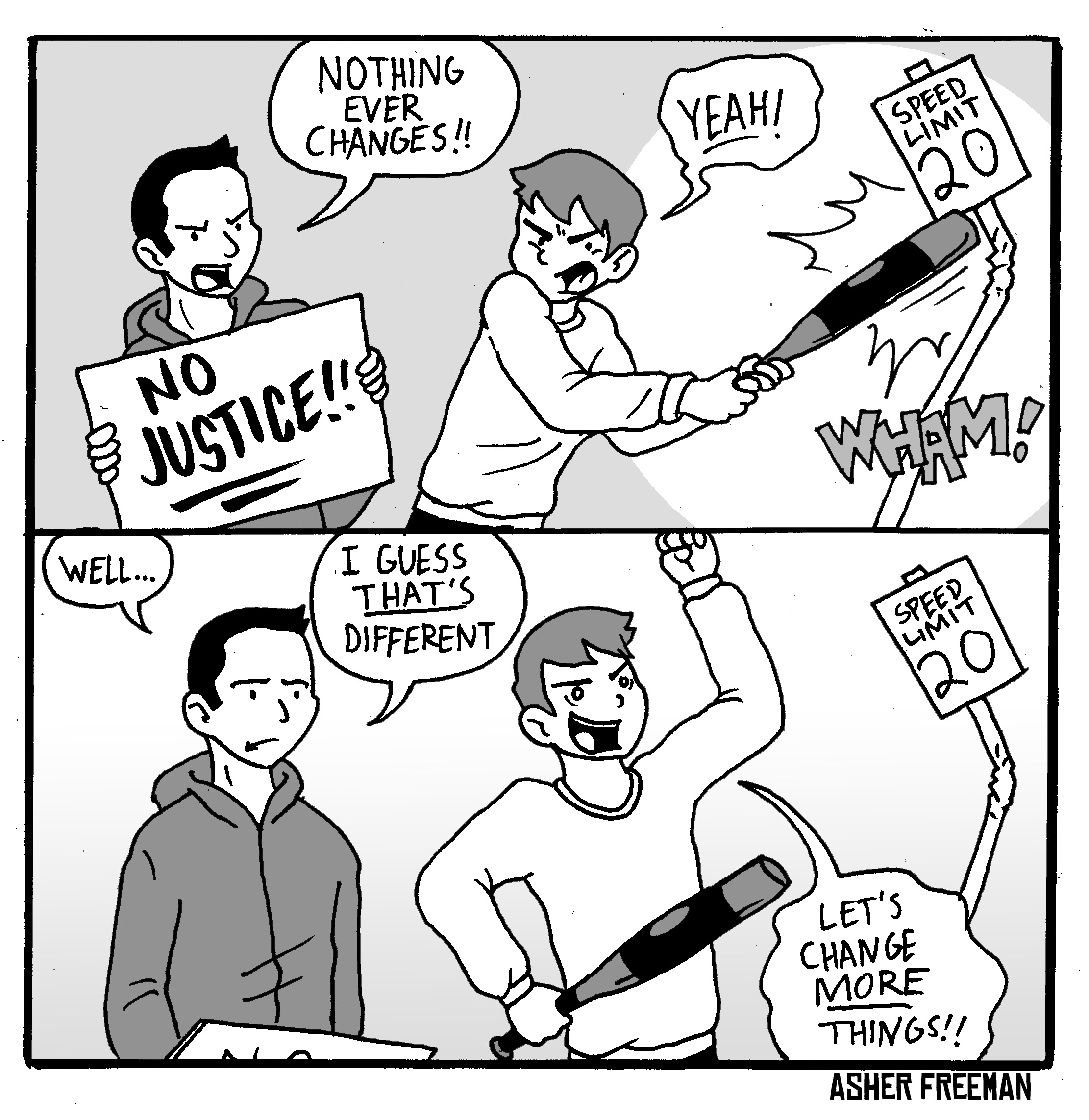
If you pay attention to the news, you probably hear about social injustices around the world. These injustices range from issues of race to religion to gender. Something you might not hear is how to actually solve or combat these social injustices.
It’s difficult to pinpoint how any one social injustice can be fought. Take, for example, Michael Brown’s death in Ferguson, Mo. Some people called this a social injustice, especially because the policeman who shot Brown was not charged. There were several responses to this situation — people rioted, participated in silent protests, took to the Internet to debate and spread awareness, and others did nothing. At Baylor, after an intramural team called itself “Ferguson PD,” there was a panel discussion to raise awareness and have a conversation about race issues.
However, what came of these actions? The intramural team at Baylor changed its name. There was a march on campus during Christmas on Fifth to raise awareness as well. Did the march achieve its goal?
Perhaps a series of actions would work well together. A panel to start a discussion. A march to raise awareness. Press conferences to express the underlying issues to a single social injustice. Petitions. Peaceful assembly. Social media campaigns. Letters to the local news outlets.
If even one person’s mind was changed as to race relations or if someone now understands someone else’s perspective, then, yes, these actions were successful. Even if it seems as though nothing changed — it has. Change can’t always be instantaneous. Sometimes we never see the results of our actions until years later, or perhaps at all.
This does not mean, however, that every social injustice needs a riot or protest to see change. It doesn’t mean a panel is necessary. It doesn’t mean a silent march will make a difference.
We aren’t advocating for violence in response to social injustice. It’s easy to write off violence as criminal and therefore uncredible — which doesn’t solve anything. However, a panel discussion won’t solve every problem either.
There should be a time of reflection before action when an injustice occurs. Before jumping to a solution that you think is best for a social injustice, you should be willing to understand every angle. Is it a social injustice or a misunderstanding? What would be the most effective way to spread awareness of the injustice or prevent a future misunderstanding?
Speaking and acting with dignity and grace may not receive as much media attention as a riot does. But consider the type of press you want for an injustice — to be known as crazy rioters or reasonable, thinking people. People who can lend a face to the injustice and humanize it.
Human trafficking is a major social injustice in our society. People are still being kidnapped, beaten, forced to take drugs and made to work like slaves. Campaigns like 268Generation and Unbound have raised awareness by citing statistics of human trafficking, which are shocking alone, and have also told the stories of people who’ve experienced trafficking. These organizations provide faces for a social injustice many of us in America don’t encounter on a regular basis.
Find a cause you are passionate about. Think about the many social injustices that still exist in our world. Consider how you can help. Someone who has thought out a problem rationally can make a bigger impact on a social injustice in the long term, over someone who acts rashly in one moment that is eventually lost in history.



